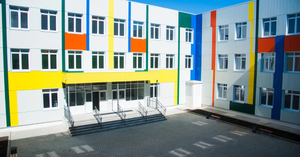Year-round schooling is an educational system where the traditional long summer break is replaced with shorter, more frequent breaks throughout the year. This schedule aims to prevent the learning loss that often occurs during extended vacations and to provide a more consistent learning experience. As with any educational model, year-round schooling has its pros and cons. This article explores the advantages and disadvantages of year-round schooling, helping parents, educators, and policymakers make informed decisions.
What is Year-Round Schooling?
Year-round schooling restructures the school calendar to balance learning and break periods more evenly throughout the year. Commonly, it operates on a 45-15 plan, where students attend school for 45 days followed by a 15-day break, although variations exist.
Pros of Year-Round Schooling
Prevents Summer Learning Loss
One of the primary benefits of year-round schooling is the prevention of summer learning loss. During long summer breaks, students often forget a significant portion of what they learned during the school year.
- Continuous Learning: Shorter, more frequent breaks ensure that students retain information better and reduce the need for extensive review periods at the start of each school year.
- Academic Consistency: A consistent learning schedule helps maintain academic momentum and keeps students engaged.
Better Utilization of School Facilities
Year-round schooling can lead to more efficient use of school facilities.
- Reduced Overcrowding: By staggering schedules, schools can reduce overcrowding and make better use of their resources, potentially accommodating more students without the need for additional infrastructure.
- Maintenance Opportunities: Frequent breaks allow for regular maintenance and improvements to school facilities without disrupting the academic calendar.
Flexibility for Families
For some families, year-round schooling offers more flexibility.
- Vacation Planning: Shorter breaks throughout the year provide families with more opportunities to plan vacations at different times, often avoiding peak travel seasons.
- Consistent Routine: A consistent school schedule can be beneficial for families who struggle with finding childcare or keeping children engaged during long summer breaks.
Supports At-Risk Students
Year-round schooling can be particularly beneficial for at-risk students.
- Continuous Support: Students who need additional support or remediation can receive it more regularly, without the long gap of summer.
- Engagement: Regular breaks can help keep at-risk students engaged and reduce dropout rates.
Cons of Year-Round Schooling
Disruption of Traditional Summer Activities
One of the main criticisms of year-round schooling is the disruption of traditional summer activities.
- Camps and Programs: Many summer camps, programs, and activities are designed around the traditional school calendar. Year-round schooling can limit students’ opportunities to participate in these enriching experiences.
- Family Time: Long summer breaks provide a unique opportunity for extended family time, which can be challenging to replicate with shorter, more frequent breaks.
Scheduling Conflicts
Year-round schooling can create scheduling conflicts for families and educators.
- Sibling Schedules: If siblings attend schools with different schedules, it can complicate family planning and childcare arrangements.
- Teacher Availability: Teachers accustomed to traditional schedules may find it challenging to adjust to year-round schooling, potentially leading to burnout or turnover.
Extracurricular Activities
Extracurricular activities, including sports and arts programs, often follow the traditional school calendar.
- Program Conflicts: Year-round schooling can interfere with extracurricular activities, making it difficult for students to participate consistently.
- Competition Timing: Students may miss out on opportunities to compete or perform at times when they are on break, disrupting their development and engagement in these activities.
Transition Challenges
Transitioning to a year-round schooling model can pose several challenges.
- Adjustment Period: Students, parents, and teachers may require time to adjust to the new schedule, which can initially impact learning and satisfaction.
- Logistical Issues: Implementing a year-round schedule requires careful planning and communication to address logistical issues such as transportation, meal services, and extracurricular scheduling.
Impact on Learning and Development
The impact of year-round schooling on learning and development varies depending on the individual student and context.
Academic Performance
- Mixed Results: Studies on year-round schooling show mixed results regarding academic performance. Some research suggests slight improvements in test scores, while others indicate no significant difference compared to traditional calendars.
- Subject Specific: The benefits may be more pronounced in certain subjects, particularly those that require continuous practice and retention, such as math and reading.
Social and Emotional Development
- Peer Relationships: More frequent breaks can affect peer relationships, as students may not see their friends as consistently. However, shorter breaks can also prevent social stagnation that sometimes occurs over long vacations.
- Stress Levels: Regular breaks can help reduce student stress and burnout, providing time for rest and rejuvenation. However, the constant cycle of starting and stopping school may increase anxiety for some students.
Considerations for Parents and Educators
When evaluating year-round schooling, it’s essential to consider the specific needs and circumstances of your community.
- Community Needs: Assess whether the local community has the resources and support systems in place to accommodate a year-round schedule.
- Student Needs: Consider the diverse needs of students, including those requiring additional academic support, those involved in extracurricular activities, and those who benefit from extended family time during traditional summer breaks.
- Teacher Preparedness: Ensure that teachers are prepared and supported to transition to a year-round schedule, including professional development and planning time.
Conclusion
Year-round schooling offers a range of benefits, including preventing summer learning loss, better utilization of school facilities, and continuous support for at-risk students. However, it also presents challenges, such as disrupting traditional summer activities, scheduling conflicts, and potential impacts on extracurricular participation.
By carefully weighing the pros and cons and considering the unique needs of their children and community, parents and educators can make informed decisions about whether year-round schooling is the right choice. As with any educational model, the key is to provide a supportive and flexible learning environment that fosters academic success and personal growth.








Be the first one to comment on this story.